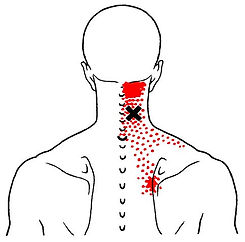


Basics of Dry Needling
Indications
-
Pain of myofascial origin
-
Spasticity
Contraindications
-
Acute infections
-
Blood thinning
-
No consent from patient
-
Fever
-
Acute emergency
-
Lymphedema
-
Hematoma
-
Osteosynthesis
Precautions
-
Gravidity
-
Children
-
Psychiatric diseases
-
HIV
-
Diabetes
-
Contagious diseases
Adverse Effects
-
Pneumothorax
-
Infections
-
Soreness at the site of needling
-
Local bleeding at the insertion site
-
Dizziness and vertigo
-
Sudden and excessive perspiration,
-
Fainting
Parameters
Clinical Characteristics of Trigger points:
-
Weakness of involved muscle
-
Loss of coordination
-
Altered sequence of recruitment patterns
-
Decreased work tolerance of muscle
Patient Position
-
Supine
-
Prone
-
Side-lying
Procedure
-
Wear gloves
-
Use alcholol wipes to clean the area
-
Identify the taut band
-
Remove the tube (with needle insitu) from the wrapper
-
Release the needle by removing the colored tab on the top while pressing the top of the needle against the tube to keep it in tube
-
Place the tube on the patient over the trigger point
-
Let the needle drop down onto the skin
-
Briskly tap the top of the needle to get it through the skin
-
The needle is placed in order to penetrate the contraction knot with straight in and out motions (or tangential to the muscle to minimize adverse effects)
-
A local twitch response should be elicited
-
The needle may be drawn back to the skin and redirected in order to treat other parts of the contraction knot or nearby areas
